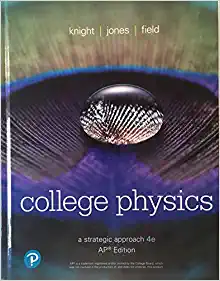It is well known that runners run more slowly around a curved track than a straight one.
Question:
It is well known that runners run more slowly around a curved track than a straight one. One hypothesis to explain this is that the total force from the track on a runner’s feet— the magnitude of the vector sum of the normal force (that has average value mg to counteract gravity) and the inward-directed friction force that causes the runner’s centripetal acceleration— is greater when running around a curve than on a straight track. Runners compensate for this greater force by increasing the time their feet are in contact with the ground, which slows them down. For a sprinter running at 10 m/s around a curved track of radius 20 m, how much greater (as a percentage) is the average total force on their feet compared to when they are running in a straight line?
Step by Step Answer:

College Physics A Strategic Approach
ISBN: 9780134779218
4th Edition
Authors: Randall D. Knight, Brian Jones





